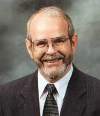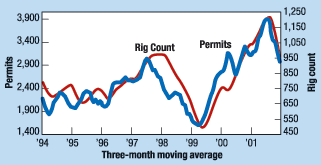Drilling developments
Underbalanced drilling research. In the BP Upstream Technology Group’s November 2001 issue of Well Connected, authors Jonny Gent and Richard Reiley, both based in Houston, overview the underbalanced drilling (UBD) project, which was committed to delivering several key items to the drilling community during 2001. These included a candidate selection model and historical understanding of how underbalance wells produce. The project also committed to "promote the uptake of UBD in assets worldwide." The first major event coordinated was the candidate selection forum in Aberdeen during April. This event represented most of the key operators in underbalance, plus several service and consulting companies. Discussions centered on how to select candidates, and production results, concluding that no model then existed to accurately predict how UB drilling / completion improved production / reserve recovery. Significant searching in the literature, pulled from BP’s experience, and from sharing data, produced some 300 papers, but with only 30 case studies. Early observations from the studies show that sandstone reservoirs respond better to UB drilling / completions than do other types of reservoirs, the perceived reason being they are much easier to damage than carbonates. At the request of the Southern North Sea Underbalanced JV team, the BP Institute for Multiphase Flow at Cambridge University began looking into the physics of why UB increases productivity and reserve recovery. Initial modeling has provided insight into why UB improves productivity. A predictive model is still not a reality, but an understanding is "beginning to develop," the authors say. BP has considerable UBD expertise, mostly with air and foam drilling. BP was the first to have a totally closed loop system (to minimize flaring) while drilling underbalanced. Five other wells have been drilled closed loop, recovering about 80% of the total gas used. And the company has made a significant time investment in IADC’s UB Subcommittee. The deliverables are recommended practices and guidelines for managing UB-operation safety, the UB rig-pass system, and minimum levels of training and certification for staffing UB operation. On November 27 – 28, the IADC Underbalance Technology Conference and Exhibition will be held in Aberdeen, with BP as a major sponsor. Schlumberger is pursuing relevant, real-time analysis of production data while drilling. As an evaluation, several blind tests were given the company from BP’s various fields. After analyzing the data, compared to known values, Schlumberger was able to blind-predict reservoir quality within 25% of expected values. The complete data set was supplied and the report was just recently issued. BP says the path forward is fraught with hazards and requires commitment and determination to reap benefits of UB drilling / completions. Based on analog data, it believes the reward can be a 300% increase in productivity, with a reserve growth of 50% – a journey well worth the effort. Drilling permits and rig counts. Lehman Brothers’publication, The original drilling permit monthly – January 2002, shows some interesting trends for U.S. drilling, as revealed by analysis of drilling permits and rig counts for 30 active states. The introduction notes that all major states require drilling permit filing, usually one of the last steps taken before drilling commences. Before the permit-filing step, companies incur significant expenses, including land costs, legal fees and geological expenses and, at that time, much of the infrastructure is in place.
Thus, most wells for which permits are filed are drilled. Lehman’s extensive analysis shows a very strong relationship between permit issuance and rig count, as the accompanying figure proves. While lead time varies by cycles and states, most often it is roughly two months. Drilling permits for the 30 states monitored declined 13.8% during December from the November count, adjusted for comparable numbers of filing days. Kansas (down 58%), New Mexico (36%), Oklahoma (19%) and Wyoming (14%), led the decline. Drilling permits declined 32.2% in December, since the May peak. Offshore rig utilization. ODS-Petrodata Group says mobile offshore drilling rig utilization in Gulf of Mexico, European and worldwide waters declined during the first week of January. U.S. Gulf utilization slipped to 60.5% due to a net one-rig decrease in the number of rigs under contract. Of the 200 mobile offshore rigs in the region, 121 were under contract. European utilization declined to 91.4% due to a net one-rig increase in fleet size, and corresponding decrease in contracted rigs. Of the 105 rigs in the area, 96 were under contract. West Africa’s utilization of its 44-rig fleet remained at 97.7%. And Asia / Australia’s 69-rig fleet remained in the 83% utilization range. A newbuild jackup enroute to the North Sea from the U.S. Gulf will boost the worldwide mobile offshore fleet to 655 rigs. Of these, 531 are under contract, for a utilization of 81.1%. Contractors are taking a big hit on dayrates, to the benefit of oil companies when oil / gas prices are off. GlobalSantaFe’s December 17 SCORE rating, which compares the profitability of current dayrates to those of the 1980 – 1981 peak – when SCORE averaged 100% – was way down. November 2001 percentage values were: the Gulf of Mexico (32.6); North Sea (52.4); West Africa (58.8) and SE Asia (55.4). The worldwide average of 46.1% is 22.0% below 5 years ago – not the economic climate in which contractors build new rigs. |
- Coiled tubing drilling’s role in the energy transition (March 2024)
- Using data to create new completion efficiencies (February 2024)
- Digital tool kit enhances real-time decision-making to improve drilling efficiency and performance (February 2024)
- E&P outside the U.S. maintains a disciplined pace (February 2024)
- Prices and governmental policies combine to stymie Canadian upstream growth (February 2024)
- U.S. operators reduce activity as crude prices plunge (February 2024)
- Applying ultra-deep LWD resistivity technology successfully in a SAGD operation (May 2019)
- Adoption of wireless intelligent completions advances (May 2019)
- Majors double down as takeaway crunch eases (April 2019)
- What’s new in well logging and formation evaluation (April 2019)
- Qualification of a 20,000-psi subsea BOP: A collaborative approach (February 2019)
- ConocoPhillips’ Greg Leveille sees rapid trajectory of technical advancement continuing (February 2019)




